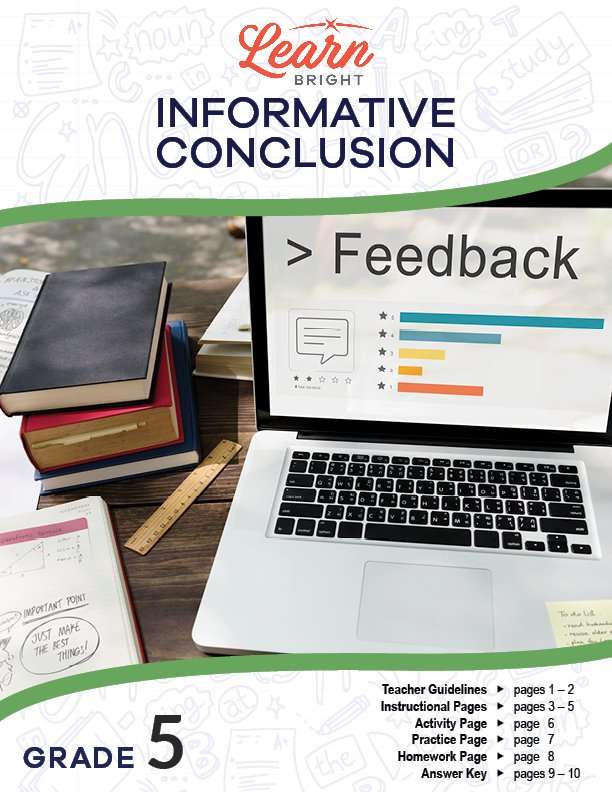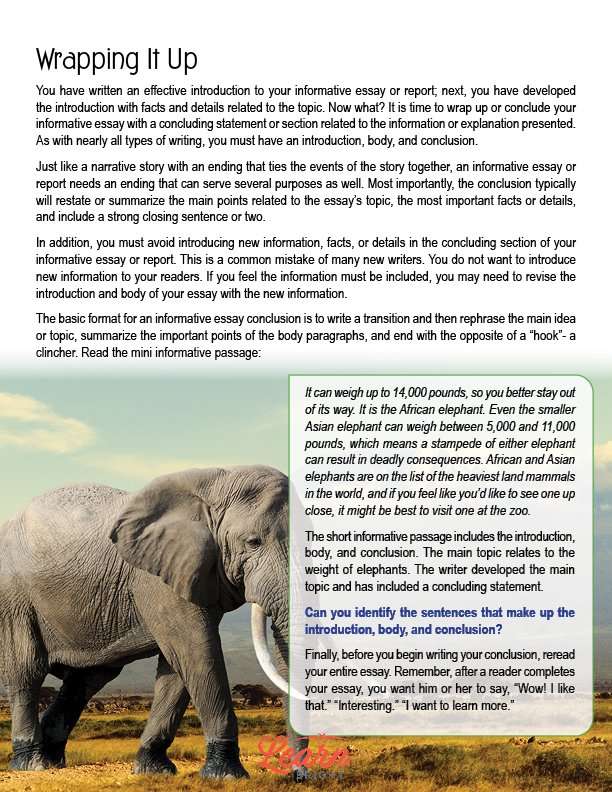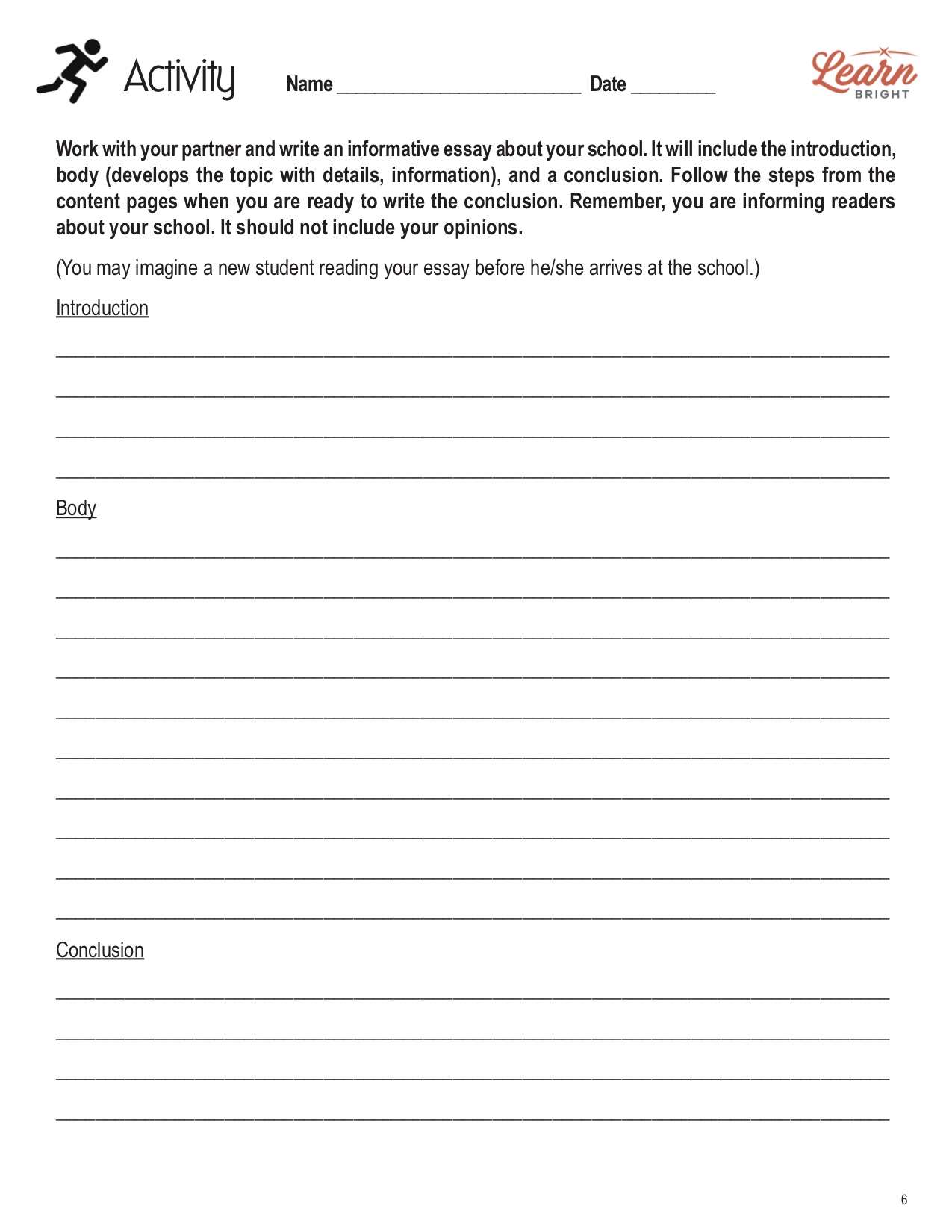Description
What our Informative Conclusion lesson plan includes
Lesson Objectives and Overview: Informative Conclusion describes how to write a conducting statement that relates to the information of a text. Students will learn about the concept of a summary and how it ties the rest of a text together. They will work to identify the purpose of a piece of writing based on the conclusion. By the end, they will be able to write an essay that contains a sensible conclusion.
There are three content pages in this lesson that guide students through the process of creating conclusions that make sense. The lesson presents a few examples of short texts that contain an intro, body, and conclusion. Students will learn through these examples how to identify the sentences that represent each part of the story.
The lesson lists a series of five steps and ideas to help students create conclusions that inform readers and that wrap up their piece of writing. For instance, one idea is to end with a “clincher” that closes the paper in a powerful way. Another idea is to explain the importance of the main idea somewhere in the concluding section of a paper.
INFORMATIVE ESSAY ACTIVITY
Students will work with partners for the activity portion of the worksheet. They will write an intro, some body paragraphs, and a conclusion. The topic is an informative essay about their school. It should not include any opinions because the purpose is exclusively to inform readers about facts regarding the school.
M&M’S PRACTICE WORKSHEET
For the practice worksheet, students will read an intro and body of a familiar essay about M&Ms. They will need to write the conclusion to the essay. After they complete it, they will answer yes or no to six questions assessing how they feel they did on their conclusion.
INFORMATIVE CONCLUSION HOMEWORK ASSIGNMENT
The homework assignment requires students to read the introduction statement of three essays. They will then have to rephrase it for a conclusion. There are five additional questions regarding informative conclusions for them to answer at the end.









